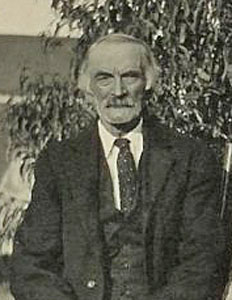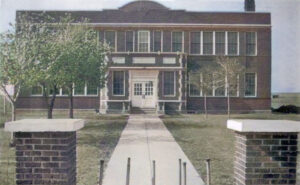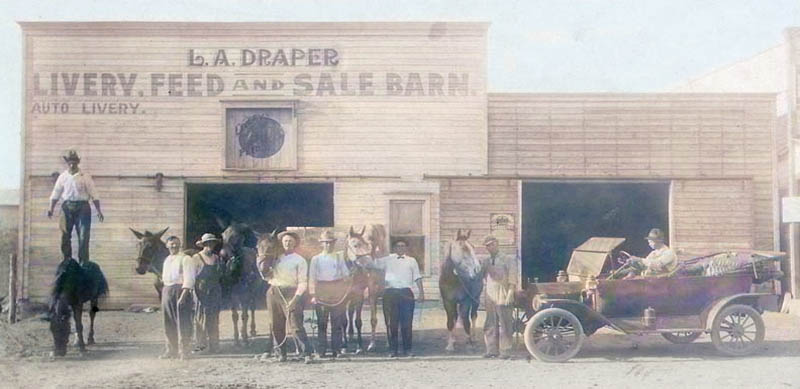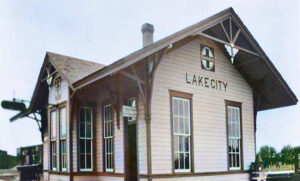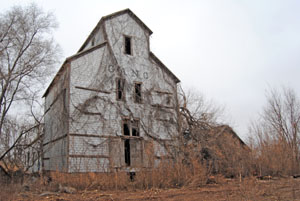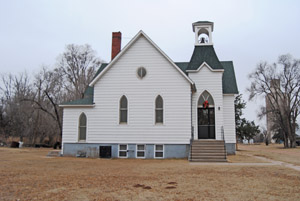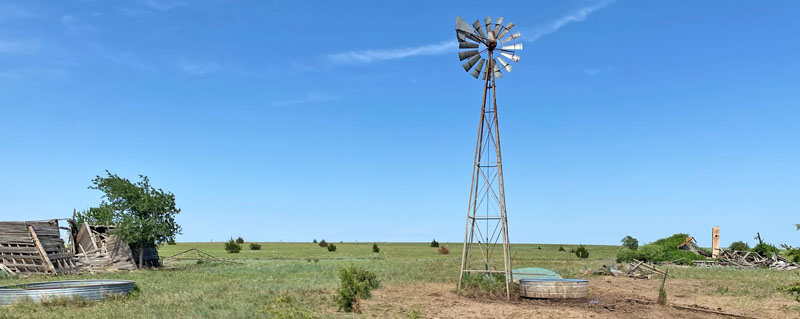
Lake City, Kansas rubble, by Kathy Alexander.
Lake City, Kansas, is a ghost town on the Medicine Lodge River in southwestern Barber County. It is also a census-designated place; as of the 2020 census, its population was 47.
Reuben Lake established Lake City on April 6, 1873, and the town was named for him. Originally from Illinois, he arrived in Kansas in 1865 and settled in Neosho County before heading further west to homestead. Lake City was located in Lake Township amid the scenic Gypson Hills cattle country in a deep valley, backed on the north by a bluff rising above it and surrounded on the south by dense forest trees near the Medicine Lodge River.
When the county was organized in November, Reuben Lake was named Sheriff. A post office was established on December 9, 1873, with Gideon C. Smith serving as the first postmaster. Reuben Lake started a sawmill by the river to obtain lumber for the houses built. Unfortunately, the mill was short-lived and burned down.
The town was platted in 1874 after Reuben Lake established a store.
In 1878, Lake City had a Methodist Church, a district school, a general store, a lawyer, a physician, and a population of 40. Mail was delivered semi-weekly mail to Reuben Lake, the postmaster. Its nearest shipping point was in Hutchinson, 75 miles distant.
In the early 1880s, Lake City had excellent prospects. It was a busy, bustling village of 350 inhabitants. At that time, the Atchison, Topeka & Santa Fe Railroad projected a line from Medicine Lodge to Lake City, secured the right of way, and completed the grade. However, for unknown reasons, the railroad was not built. At that time, it had two large business houses, a blacksmith shop, a fine school building, and many residences.
Soon, Reuben Lake built a large, two-story brick building that contained a large room for a store, several store rooms, and an opera room. The Lake City Prairie Dog newspaper was published in the building weekly from 1884 to 1888. Several homes and a schoolhouse were built of the same native brick.
In 1885, lake built a two-story, 20-room hotel, which his wife, Mary, operated. By then, the town also had a blacksmith, a general store, a shoemaker, a Methodist Church, a public school, and 40 residents.
By the late 1880s, he had built another large building for a hardware store and mortuary, a furniture store, and a wagon maker’s establishment. He also built a wind-driven grist mill and promoted the first bridge across the Medicine River south of Lake City, enabling people in the southern part of the county to get to town.
The Lake Hotel burned down in 1897.
By 1907, the Atchison, Topeka & Santa Fe Railroad had finally come through Lake City.
At its peak, Lake City had a school, two grocery stores, a hardware store, a hotel, a bank, a blacksmith, a gas station, grain elevators, a telephone company, livery stables, a high school, a doctor, a drugstore, and its post office served more than 1,000 residents in a small area around the city.
In 1910, it had several business establishments, including a bank and a daily stage to Deerhead and Aetna. It also had telegraph and express offices, a money order post office, and a population of 250.
The last train went through Lake City in the 1990s.
Lake Valley’s post office suspended service on October 3, 1990. It officially closed on December 18, 1993.
Today, little remains of Lake City except for a grain elevator, the Methodist Church, a few old buildings, and some homes.
Lake City is 18 miles northwest of Medicine Lodge.
© Kathy Alexander/Legends of Kansas, updated November 2024.
Also See:
Sources:
1878 Gazetteer and Business Directory, R.L. Polk & Co.
1884-1885 Gazetteer and Business Directory, R.L. Polk & Co.
Blackmar, Frank W.; Kansas: A Cyclopedia of State History, Vol I; Standard Publishing Company, Chicago, IL 1912.
Fort Hays State University
Dead Towns of Kansas
GenWeb
Wikipedia

